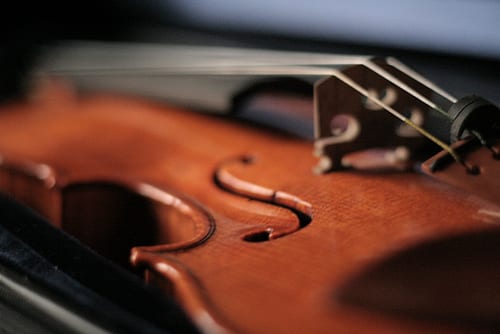 As you’re learning how to play the violin, the art of holding and placing your bow just right is important to master. There are a lot of details that go into proper bowing technique, and each has the potential to make or break your sound.
As you’re learning how to play the violin, the art of holding and placing your bow just right is important to master. There are a lot of details that go into proper bowing technique, and each has the potential to make or break your sound.
For many beginners, learning to control the bow so it doesn’t bounce against the strings is the first step. The dreaded “bouncing bow” is a common issue, especially if you’re trying to play softly, or if you’re nervous. Here are some possible reasons for a bouncing bow, and how to fix it:
– Uneven pressure and tension.
Correct your bow grip to reduce excessive pressure, which can be one of the primary offenders for a bouncing bow. Keep your grip soft (but also not too loose), and your thumb relaxed. Additionally, avoid tensing up when you’re playing, especially in your wrist and shoulder.
– Poor bowing technique.
Make sure you’re keeping your bow straight and drawing it perpendicular to the strings. Consult your violin teacher or watch yourself play in the mirror to catch any crooked angles.
– Overly-tightened bow hair.
Check the hair on your bow, as hair that is too tight can contributing to bouncing. Ideally, you should be able to fit a pencil in between the hair and the stick.
– Incorrect posture.
Have your violin teacher assess your posture. If you’re holding your arm too high, for example, the uneven pressure caused by that might be the culprit.
You might also like…
– The Science Behind the Strings
– What Are Violin Strings Made Of, and Which Type is Best?
– Videos We Love: How Are Violins Made?
Photo by land_camera_land_camera.
Suzy S.
